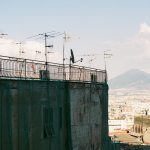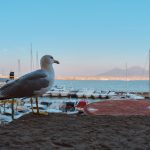Medical courses are highly sought after by students around the world. One institution that has gained a reputation for its medical program is Napoli Luigi Vanvitelli. If you are considering pursuing a medical degree at this institution, you may be wondering about the details of the program, including the timetable, cost of living for international students, scholarships, and the admission process. In this article, we will delve into each of these topics to provide you with a comprehensive overview of what you can expect from the medical course at Napoli Luigi Vanvitelli. Whether you are an aspiring medical student or a parent considering this institution for your child, this article will give you valuable insights into what this medical program has to offer.
Content Quick Navigation
Timetable
The timetable for the medical course at Napoli Luigi Vanvitelli is designed to provide students with a structured and organized learning experience. A typical day at the institution usually starts at 9 am and runs until about 2 pm, with some days ending at 3 pm. During this time, students can expect to attend 3-4 lectures each day, with each lecture lasting around 2 hours.
To ensure that students are able to maintain focus and concentration during their classes, the day is usually split up by a longer break for lunch lasting around 30-60 minutes, as well as 5-10 minute breaks between classes. These breaks give students an opportunity to stretch their legs, socialize with their classmates, and recharge before the next lecture.
It’s worth noting that the timetable may vary depending on the specific course and year of study. For example, some courses may require students to attend additional practical sessions, seminars or tutorials. Students are encouraged to consult their course syllabus or speak to their academic advisor for a more detailed breakdown of their timetable.
Overall, the timetable for the medical course at Napoli Luigi Vanvitelli strikes a balance between providing students with ample time for learning and ensuring that they have enough time to rest and recharge. This helps to create an environment that is conducive to learning and encourages students to excel in their studies.
The History of Luigi Vanvitelli University of Campania:
Founded in 1991 to help alleviate the University of Naples Federico II’s workload, the University of Campania is a premier Italian institution with academic departments located across several cities, including Caserta, Naples, Aversa, Capua, and Santa Maria Capua Vetere. With a focus on cutting-edge research and innovative teaching methods, the university is dedicated to preparing students for success in a rapidly changing global economy. Notable buildings on campus include the historic Primo Policlinico di Napoli, one of the oldest university hospitals in Naples. If you’re looking to further your education and join a vibrant academic community, the University of Campania Luigi Vanvitelli is the perfect choice.
IMAT Minimum Scores
| Year | Minimum Score (Non-European) | European Scores (First/Last Round) |
|---|---|---|
| 2020 | 30.8 | First: 47.2 / Last: 39.5 |
| 2021 | 33.1 | First: 43.8 / Last: 33.3 |
| 2022 | 41.9 | First: 43.2 / Last: 34.7 |
| 2023 | 47.3 | First: 37.0 / Last: 35.0 |
Exams at The University
The exam process at Napoli Luigi Vanvitelli is designed to ensure that students have ample time to prepare and perform to the best of their abilities. To achieve this, the university operates a system where exams are not held during lecture times. This means that students are free to focus on their coursework and attend lectures without worrying about upcoming exams.
Instead, the university operates two semesters (fall and spring) where lectures are held, and no exams are scheduled during these times. There are then exam sessions during which students can sit their exams, making up a total of 7 possible dates throughout the academic year.
For the first semester, which starts in early October, the first exam session takes place in January-February. The second semester runs during the spring, and the next exam session starts late May and lasts until late July. In August, the university is completely closed, and in September, there is an “extra-ordinary” bonus exam session. This structure ensures that students have plenty of time to prepare for their exams and can schedule their studies around their personal commitments.
It’s worth noting that almost all of the exams at Napoli Luigi Vanvitelli are oral, with some subjects requiring students to pass a written portion before being granted access to the oral exam. The oral exam is the determining portion of a student’s grade, and it provides an opportunity for students to demonstrate their understanding of the subject matter and their ability to articulate their ideas effectively.
Overall, the exam process at Napoli Luigi Vanvitelli is designed to provide students with a fair and structured way to demonstrate their knowledge and understanding of their chosen subject. The system ensures that students have ample time to prepare for their exams and can do so without disrupting their studies or personal commitments.
Scholarship and Tuition Fees
Pursuing higher education can be expensive, and the cost of tuition can often be a significant barrier for many students. Fortunately, at Napoli Luigi Vanvitelli, there are several options available to help reduce the financial burden of studying medicine.
The average tuition fee for the medical course at Napoli Luigi Vanvitelli is around 1600 euros per year. However, this fee can be significantly reduced based on the socio-economic background of the student. The reduction is determined by a document called the ISEE, which proves the familial income of students. If the student’s socio-economic background is disadvantaged, they are required to pay only the taxes, which amount to around 200 euros for the academic year. This reduction is significant and helps make higher education more accessible to students from diverse socio-economic backgrounds.
Moreover, there are several scholarship programs available at Napoli Luigi Vanvitelli that can further reduce tuition fees. These scholarship programs are offered both by the university and the region where Napoli is located. The university-based scholarship programs consider the student’s academic performance and socio-economic background. In contrast, the regional scholarship programs may consider factors such as geographical location, age, and academic performance. The availability of scholarships and the amount of reduction in tuition fees vary depending on the specific program and the individual student’s circumstances.
Additionally, Napoli Luigi Vanvitelli provides grant payouts through the ADISU program. These payouts offer financial aid to students who need it the most, and the amount of aid awarded is based on the student’s socio-economic background and academic performance. These grants can be used to cover the cost of tuition, textbooks, and other academic expenses.
Finally, students have the opportunity to work for the university in various positions such as tutoring. These positions are usually determined by the student’s grades and availability. However, most students work outside of the university in a variety of jobs such as teaching English or gymnastics. The ability to balance work and studies really depends on the individual student’s time management skills and the demands of their chosen job.
In conclusion, Napoli Luigi Vanvitelli offers several options to help reduce the financial burden of studying medicine. These options include fee reductions based on socio-economic background, scholarship programs, grant payouts, and job opportunities both within and outside of the university. By providing such options, Napoli Luigi Vanvitelli helps make higher education accessible to a broader range of students and ensures that financial constraints do not hinder their pursuit of knowledge and academic excellence.
Cost of Living
When considering pursuing a medical degree at Napoli Luigi Vanvitelli, it’s essential to factor in the cost of living. While the tuition fees may be relatively affordable, students still need to account for their accommodation, food, transportation, and other expenses. Here’s a breakdown of the cost of living in Napoli for medical students:
| Expense | Average Cost (EUR) |
| Room (with roommates) | 250-300 |
| Room (without roommates) | 500 |
| Dorms | 300-350 |
| Gym membership | 400 |
| Food and groceries | 200-300 |
| Transportation | 50-100 |
When it comes to accommodation, most students prefer to rent a room with roommates. The cost of renting a room in Napoli with roommates ranges from 250-350 euros per month. However, if a student prefers to have their own space, they can expect to pay around 500 euros per month. The dorms provided by the university are located far from the medical university in Napoli, which is why many students choose not to live in them. However, if a student is on a tight budget, the dorms are highly recommended as they are comfortable and affordable.
Napoli is a big city, and it offers plenty of entertainment options for students. A gym membership in the city center costs around 400 euros per year, which is reasonable compared to other big cities in Italy. There are also plenty of bars and restaurants in Napoli that offer affordable meals, and the city’s overall cost of living is relatively low compared to other big cities in Italy such as Rome or Milan. For instance, the prices of goods and services in Napoli are very similar to smaller northern cities such as Parma, Pavia, and Bergamo.
In conclusion, while studying medicine at Napoli Luigi Vanvitelli, students can expect to pay for their accommodation, food, transportation, and other expenses. However, the cost of living in Napoli is relatively low compared to other big cities in Italy. Renting a room with roommates is the most popular accommodation option for students, and there are plenty of affordable entertainment options in the city. By accounting for these expenses and being mindful of their spending habits, students can enjoy their time at Napoli Luigi Vanvitelli without breaking the bank.
Admission Process
When it comes to pursuing a medical degree at Napoli Luigi Vanvitelli, there are a few things that prospective students should consider regarding the admission process and living in Napoli.
The admission process to Napoli Luigi Vanvitelli is relatively straightforward compared to other universities in Italy. The only exam required to gain admission is the IMAT (International Medical Admissions Test), which measures a student’s aptitude for studying medicine. Typically, the IMAT scores required for admission to Napoli Luigi Vanvitelli are lower than those required for other northern universities. This makes it a more accessible option for students who may not have performed as well on the IMAT.
However, past students have commented on the level of education not being as high as that of other universities in the north. Nevertheless, this is something that prospective students should consider when making their decision.
One challenge that students may face when living in Napoli is the local dialect, Napolitan. While Italian is the official language, many people in Napoli speak Napolitan, which can be difficult to understand for those who are not familiar with the dialect. This can also limit opportunities for students after their studies as they may not be fluent in Italian, which is the primary language used in business and academia in Italy.
On the other hand, Napoli is a beautiful city, located close to the sea, which makes it an attractive location for students who enjoy a warmer climate. The city also offers many opportunities for students to participate in extracurricular activities, such as basketball and tennis, to stay active and make new friends.
Overall, Napoli Luigi Vanvitelli offers a unique opportunity for students to pursue their medical education in a beautiful city with a more relaxed admission process. However, students should be aware of the level of education, the local dialect, and the potential language barrier that may affect their opportunities after their studies. With careful consideration and planning, students can make the most of their time at Napoli Luigi Vanvitelli and enjoy all that the city has to offer.
Summary
In summary, the article explores various aspects of studying medicine at Napoli Luigi Vanvitelli, including the timetable, exams, cost of living, scholarships, and admission process. It provides insights into the structured and organized learning experience that the medical course offers and outlines the exam process.
The article also offers a breakdown of the costs associated with studying medicine in Napoli, including accommodation, food, transportation, and other expenses. It highlights the various scholarship programs and grant payouts available to students to reduce tuition fees and manage their expenses effectively.
Additionally, the article offers guidance on the admission process and living in Napoli, including insights into the level of education, language barriers, and opportunities available to students. It concludes by providing a comprehensive overview of what it’s like to study medicine at Napoli Luigi Vanvitelli, helping prospective students make informed decisions about their future academic pursuits.















